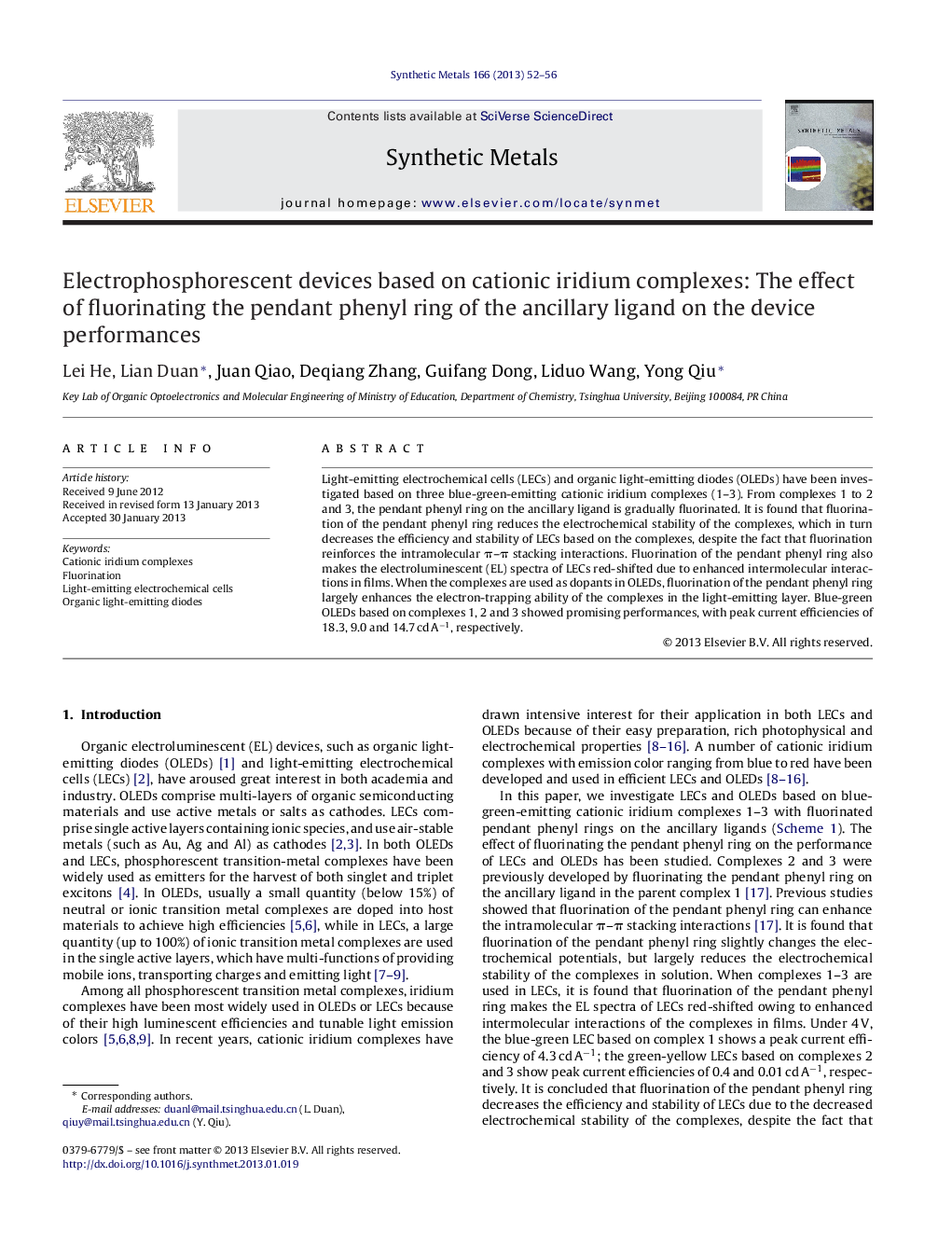| Article ID | Journal | Published Year | Pages | File Type |
|---|---|---|---|---|
| 1441452 | Synthetic Metals | 2013 | 5 Pages |
Light-emitting electrochemical cells (LECs) and organic light-emitting diodes (OLEDs) have been investigated based on three blue-green-emitting cationic iridium complexes (1–3). From complexes 1 to 2 and 3, the pendant phenyl ring on the ancillary ligand is gradually fluorinated. It is found that fluorination of the pendant phenyl ring reduces the electrochemical stability of the complexes, which in turn decreases the efficiency and stability of LECs based on the complexes, despite the fact that fluorination reinforces the intramolecular π–π stacking interactions. Fluorination of the pendant phenyl ring also makes the electroluminescent (EL) spectra of LECs red-shifted due to enhanced intermolecular interactions in films. When the complexes are used as dopants in OLEDs, fluorination of the pendant phenyl ring largely enhances the electron-trapping ability of the complexes in the light-emitting layer. Blue-green OLEDs based on complexes 1, 2 and 3 showed promising performances, with peak current efficiencies of 18.3, 9.0 and 14.7 cd A−1, respectively.
Graphical abstractFigure optionsDownload full-size imageDownload as PowerPoint slideHighlights► LECs and OLEDs based on three cationic iridium complexes were characterized. ► Effect of fluorinating the pendant phenyl ring on device performance was studied. ► Fluorination reduces LEC stability despite enhanced intramolecular π–π interaction. ► Fluorination makes the electroluminescence of LEC red-shifted. ► Fluorination largely enhances electron-trapping ability of the complex in OLED.
